The Garden Clinic is coming to you live from the Namboor Showground this weekend.
We’re here for the Queensland Garden Expo, enjoying the glorious winter sunshine, and the show; one of our favourites on the garden show circuit.
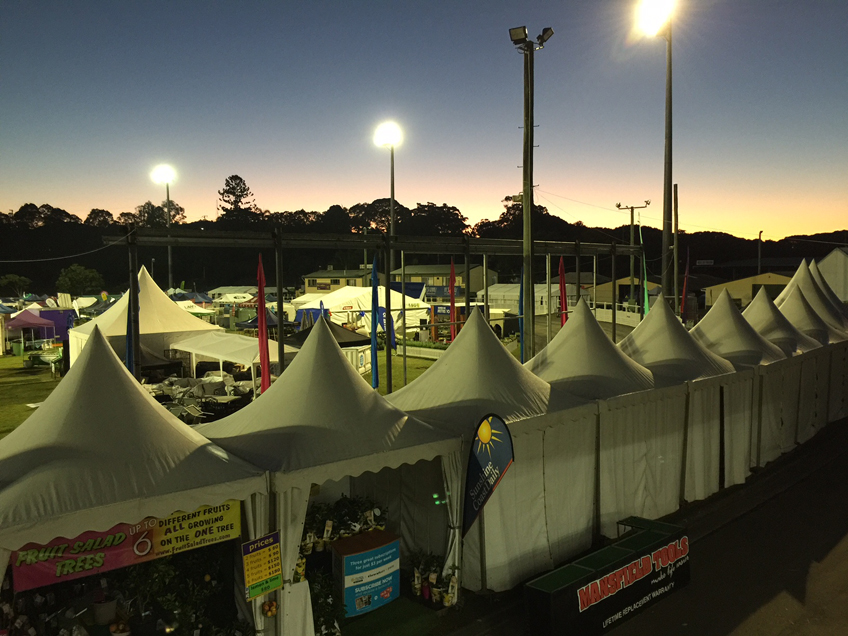
Sunrise over the Nambour Showground. Photo - Graham Ross
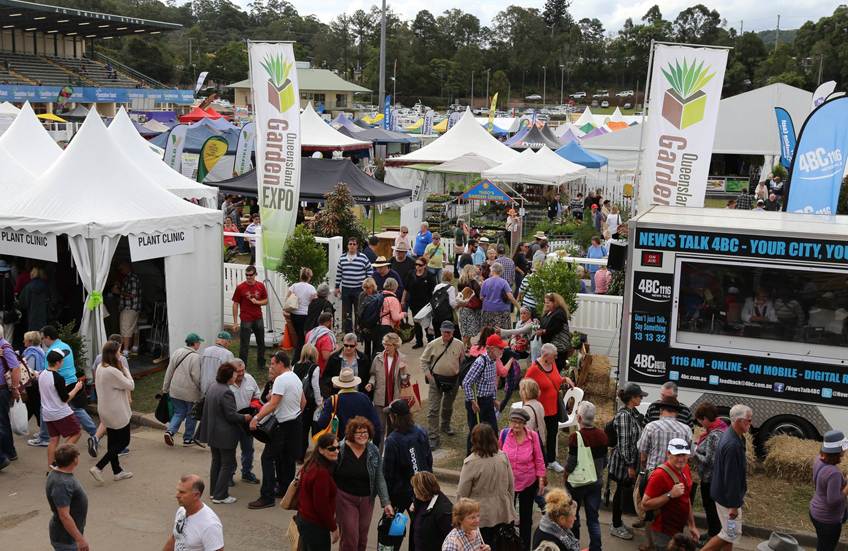
A great day out at the Nambour Showground, the Queensland Garden Expo has been running for an incredible 31 years!
It’s everyone’s favourite garden show and never disappoints me. Over 50 nurseries selling new release plants, from herbs to palms to trees to vegetables,
orchids, annuals; and of course all the products you need to look after them.
The garden gods have smiled upon the organisers of the show; the sunrise has revealed a clear blue sky and warm weather ahead. Perfect for a trip out to
the Nambour Showground to check out the action.
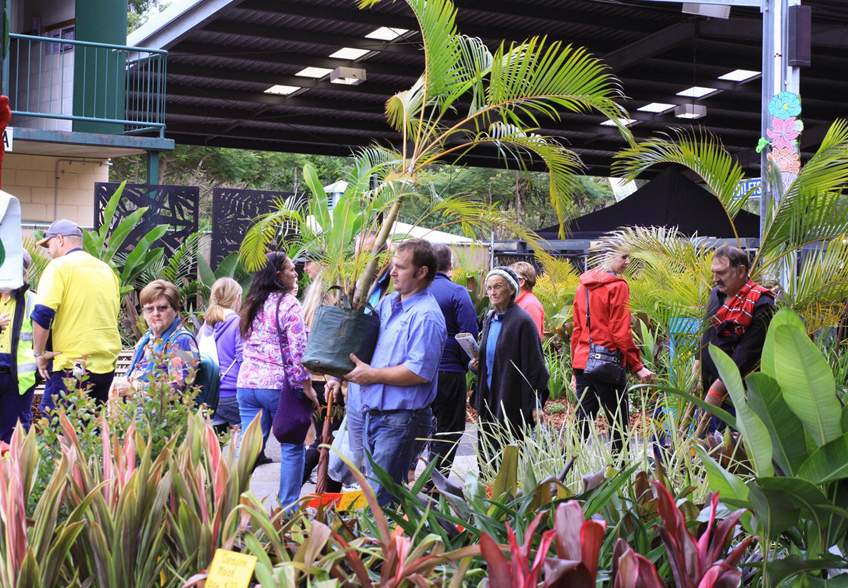
Many show-goers have done all their plant shopping for the whole year at the QLD Garden Expo.
If you are in the sunshine coast this weekend why not come down to the Nambour showground, buy some new plants for the garden, and drop in and see us at
the Garden Clinic stand.
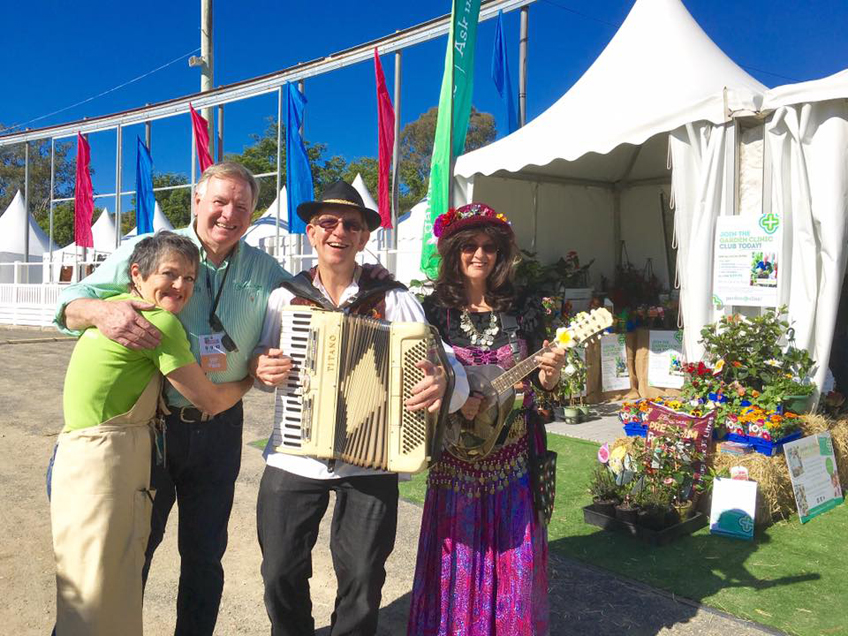
Never a dull moment at the Garden Clinic stall. Graham, Liz and the gang entertaining the crowds at the QLD Garden Expo.
After filling the ute with new plants from the show it’s time to tackle those winter garden jobs.
It’s time to:
In the Sub-tropics
Find the perfect spot for the new plants you found at the Queensland Garden Expo. Water in with seaweed solution to help settle them into their new spot.
Enjoy the tabebuias, tibouchinas and brugmansias, all in full flower in July in the sub-tropical zone.
In Temperate areas
Select a magnolia while they are in flower. Goblet-shaped blooms come in ivory, lemon, pink, purple and bicoloured.

Magnolia 'Starwars'.
Choose a ‘birthday tree’ for your child or grandchild. Choose something flowering on their birthday and it will always to be talking point. Winter-flowering
birthday trees include deciduous magnolias, flowering peach, bottlebrush, and the Taiwan cherry. Celebrate National Tree Day on July 31 while you’re at it.
Transplant deciduous trees and shrubs while they are dormant. Now is the time to move frangipani. They have a small root ball so are easy to relocate to
a better position if necessary.
Plant chit potatoes. This is the ideal month to get potatoes ready for planting out in spring. Buy virus-free potatoes and place them in egg cartons in
a warm dark place to encourage the ‘eyes’ to sprout well before planting time.
In the Cold
Time to prune roses. The exact moment isn’t at all critical, as long as it’s in winter. Wait for a sparkling, sunny day, and burn or bin the offcuts and
old leaves.
Prune raspberry canes. Most varieties flower and fruit on canes produced last year, so simply remove all those that fruited this year.
Catalogues of summer-flowering bulbs such as dahlias, liliums and gladioli come out about now. Read them at your leisure, then get out the pen and start
get!
When you have 10 minutes
Plant perfume! Fragrant flowers seem to smell all the sweeter in winter. Favourites include winter daphne, winter honeysuckle (Lonicera fragrantissima)
and stocks (Matthiola sp.). Plant punnets of stocks throughout a cottage garden; group for maximum fragrance at the front door; or plant a
clump in a large pot on the entertaining terrace. Continue to liquid feed and you will be able to bring armfuls of the clove-scented flowers into your
home.
Want more winter jobs to do in your garden? check out more here, It's Time To: July
Bush garden
Grevillea 'Honey Gem'.
There have been many grevillea hybrids developed in Queensland in recent decades that are vigorous, prolific bloomers with large spectacular flowers. G.
'Honey Gem', which I briefly mentioned a few weeks ago, is one of those with a mass of large flower spikes 15 X 7cm in size.
Most of these Queensland hybrids are quick growing tall growers with G. 'Honey Gem' attaining 4x3m in size in 3-4 growth seasons or less.
The blooms are a rich orange-gold in colour and loaded with bird attracting nectar or honey produced from mid-winter to late spring.
G. ‘Honey Gem’ is thought to be a cross or hybrid between G. pteridifolia and G. banksii, two species which have parented many hybrids.
Pruning is recommended if they become too tall. Some have observed recovery from very severe pruning even close to ground level after the spring flush.
Give them a sunny position with well-drained soil. They are tolerant of mild frosts and are unrivalled as native bird-attractors.
Feeding with a low phosphorous fertiliser is recommended such as Neutrog's Bush Tucker.

Grevillea ‘Honey Gem’. Photo - Graham Ross
In the veggie patch
Over-winter tomatoes? Not on my patch.
I’m often asked about planting tomatoes at this time of year. And apart from planting seeds in a greenhouse or seed raising tray inside your kitchen window,
my answer is always no, not yet.
By encouraging tomatoes out of season you will not only struggle to nurse these plants through frost, fungus and root rot, but you will be extending the
period in which tomato pests can reside in your garden.
So keep your powder dry. Raise your tomato seeds in late winter and early spring. But don’t put them into the veggie patch until the warmer weather is
here.
Come away with us
Gardens of England & Chelsea Flower Show
We spoke to Sue live on air today. Sue has just returned from our England tour with Colin Barlow and couldn’t wait to tell us about the fun she and her husband had with the group visiting England's best gardens, and to praise Colin for the care
and attention he gave on tour. The good news is that we will return to England next year!
Come with us to an England up to its knees in spring blossom, carpets of tulips and meadows of wildflowers. Our England is a happy mix of horticulture
and history: the Chelsea Flower Show, Sissinghurst, Great Dixter and a touch of Tudor glamour.
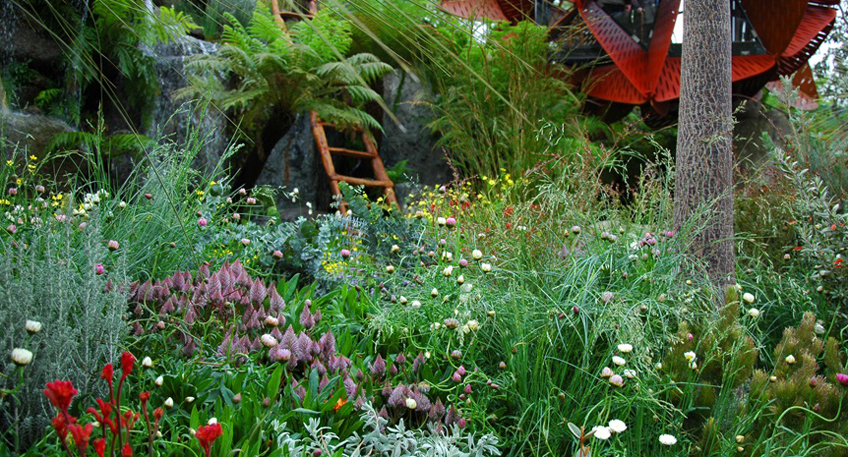
The Australian Garden display at the Chelsea Flower Show
NSW Spring Festivals
A plant lover’s delight as we follow the trail of flower festivals across NSW meeting friendly gardeners along the way. We start in Southern Highlands for Tulip Time, then Canberra for Floriade, then Cowra to catch the Cherry
Blossom and finally to the Leura Gardens Festival.
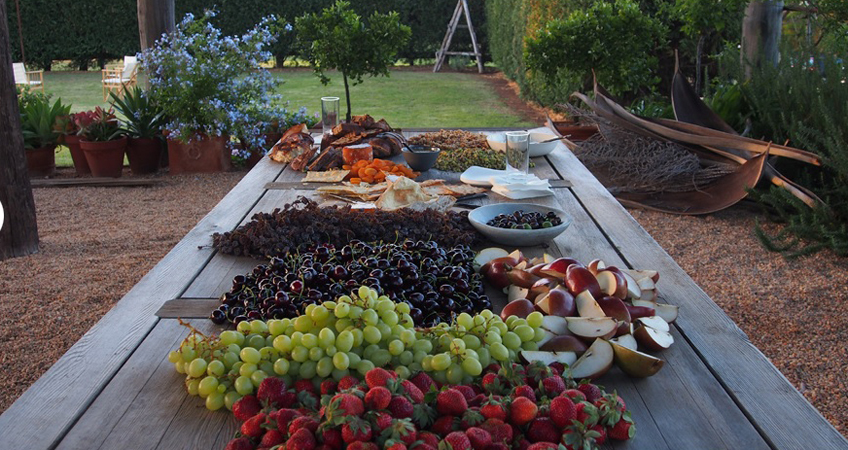
Lunchtime at Glenmore House on the NSW Spring tour.
Sandra led the tour last spring and has written a blog entitled ‘A festival of flowers’, about some of the festival regions the tour goes through and what you will see this spring.
For more information on this incredible tour go to the Ross Tours website, or call Royce or Roslyn at Ross Tours
to reserve your place on 1300 233 200 for more details on the tour.
Garden News
Aloe aloe, it's Michael Dent
Everyone loves a winter flower, and the king of them all at this time of year is the African native, the aloe. We are blessed to have a huge variety of
flowering aloe available for home gardeners, and some of the best I’ve seen come from Michael Dent’s nursery, Aloe Aloe ‘Blooming beauties for a sunburnt country’.
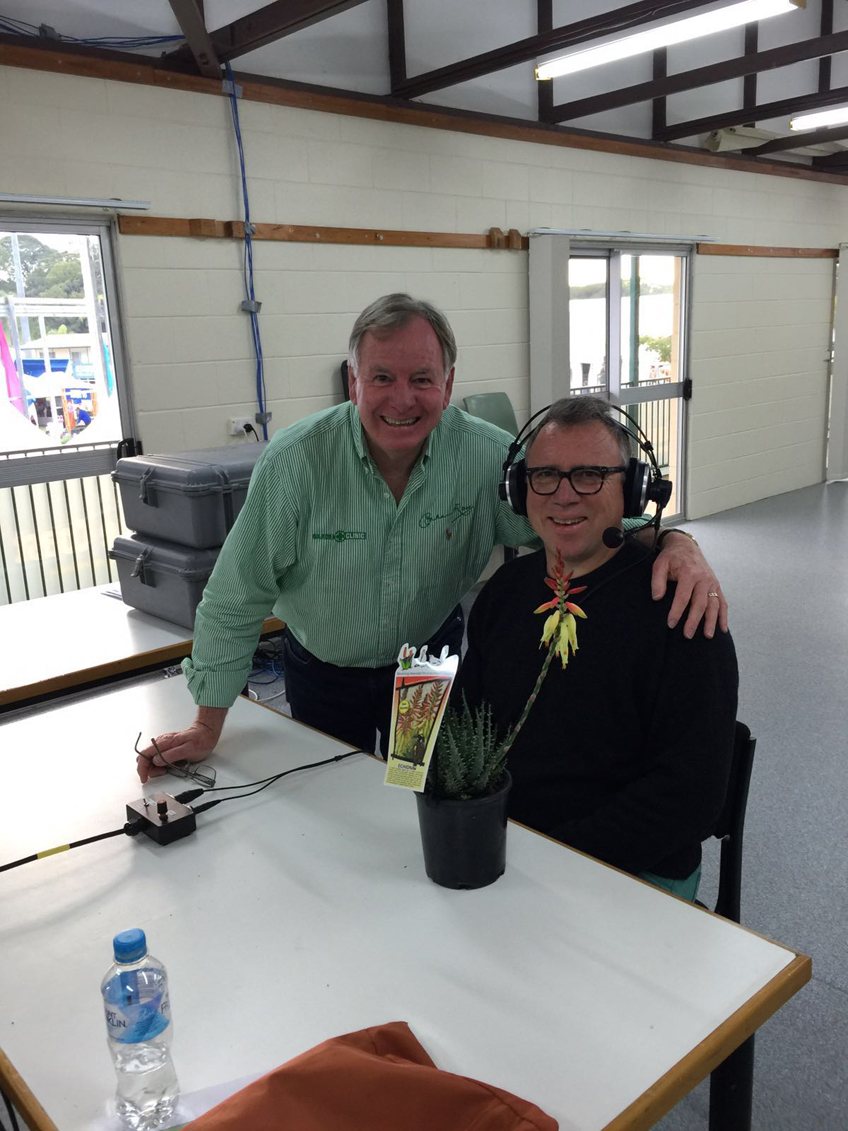
Graham with Michael Dent, aloe grower, with his new release, 'Echidna'
Michael has a new release for the Queensland Garden Expo, another new aloe, ‘Echidna’. At the smaller end of the range, Echidna is compact in size, silver-cream to bi-colour, and of course winter flowering. It’s called Echidna for its spiny appearance. But it has the least sharp spines, more like soft rubber. Good for a pot, but much better mass planted.
If you are lucky enough to be close to Nambour this weekend you can buy plants from Michael’s wholesale nursery; Michael doesn’t ordinarily sell plants directly to the public.
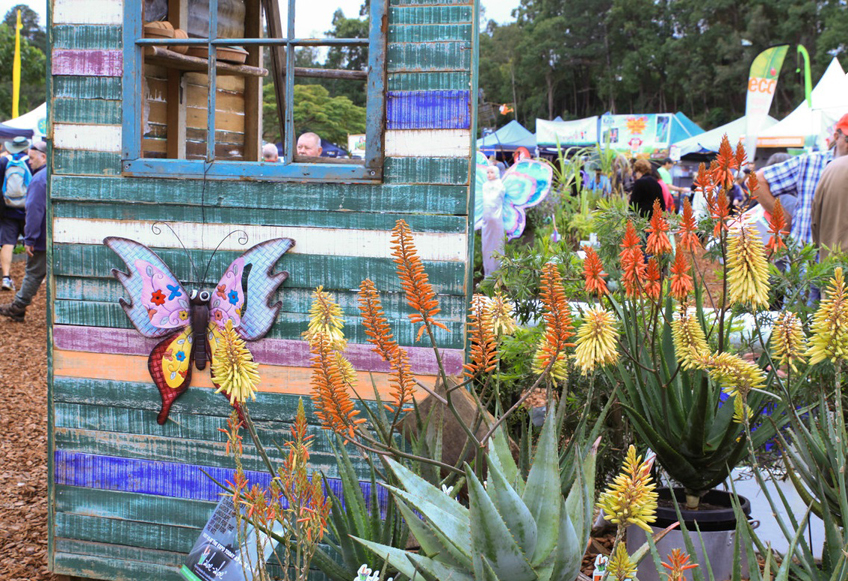
More of Michael's aloe on display at the Queensland Garden Expo.
Queensland Garden Expo organiser, Marion Beasley
Marion is a champion of gardening in Queensland. She and her team have built the Queensland Garden Expo into an international draw card.
Every year, over 34,000 garden lovers, including hundreds of horticulture professionals, flock to the Queensland Garden Expo – one of the Queensland’s
largest and most celebrated gardening events.
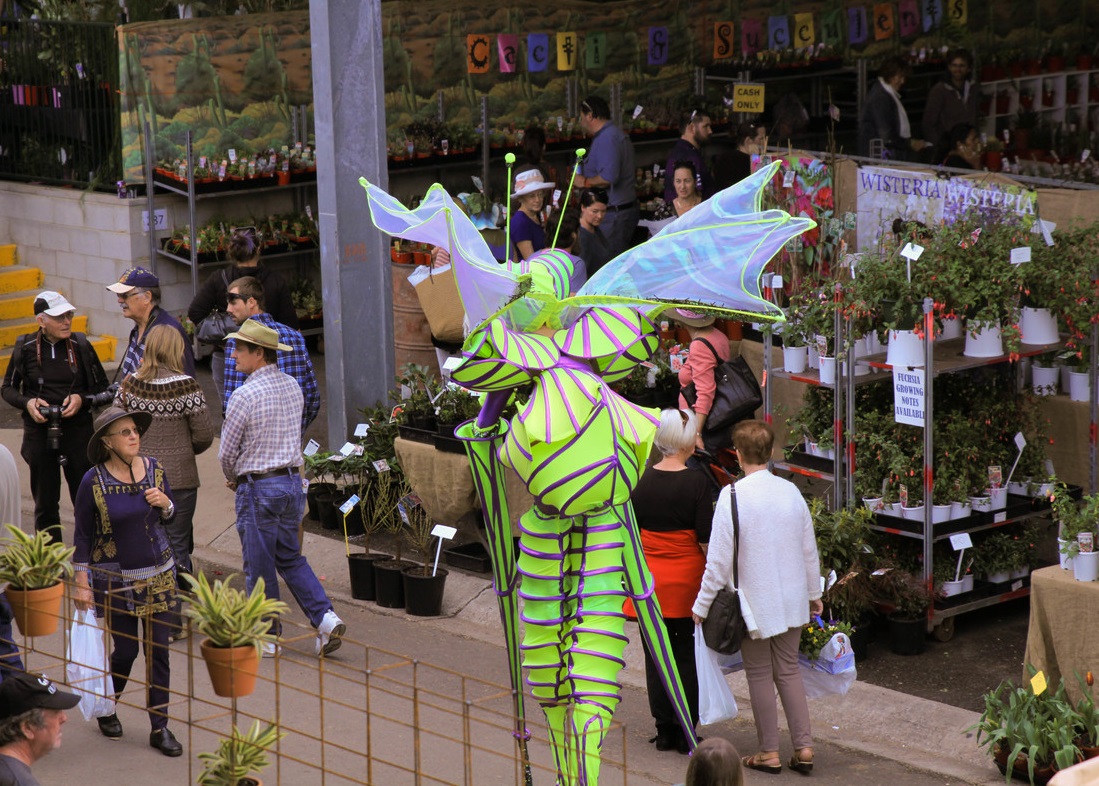
The QLD Garden Expo attracts plant lovers from all walks of life.
It's got all the elements of some of Australia’s famous garden shows, such as those in Melbourne and Sydney. And the quality of the gardens, exhibits and
lectures make this one of the top gardening events in the country. The Queensland Garden Expo is where Queensland’s top landscape designers and nurseries
will showcase their creative talents, products and knowledge.
Full-size gardens provide the centerpiece of this annual event. The expo features offerings from more than 360 exhibitors – the latest in garden tools,
books, accessories, garden art and more. Seven live stages hosting lectures, demo’s and workshops with free expert advice and information all day every
day, whilst plant exhibitors will have nearly 40,000 plants for sale daily.
And it doesn’t stop with the Queensland Garden Expo. Marion and her team will return later this year to Strathpine with the Brisbane International Garden Show, October 6 - 9.
Royal Botanic Gardens Sydney's newest attraction, The Calyx
Jimmy Turner, internationally renowned Director of Horticulture Management at the Royal Botanic Garden Sydney, Joins me on air this weekend to discuss
the centerpiece of the Garden’s 200th birthday, the Calyx.
The Calyx (pron. kal-iks, def. ‘The outermost whorl of flowers’) is a world-class horticultural space that will showcase ever-changing exhibitions
for visitors to the Royal Botanic Gardens Sydney. The calyx is launching with Sweet Addiction–
the botanic story of chocolate, which is curated by Jimmy himself.
“The Calyx is a fusion of art, theatre and flora with themed exhibitions that address conservation and environmental issues in an imaginative, accessible
way yet to be seen in Australia. It’s Broadway for plants, and Sweet Addiction is our first show – complete with lights, sounds and a few
surprises along the way,” said Jimmy.
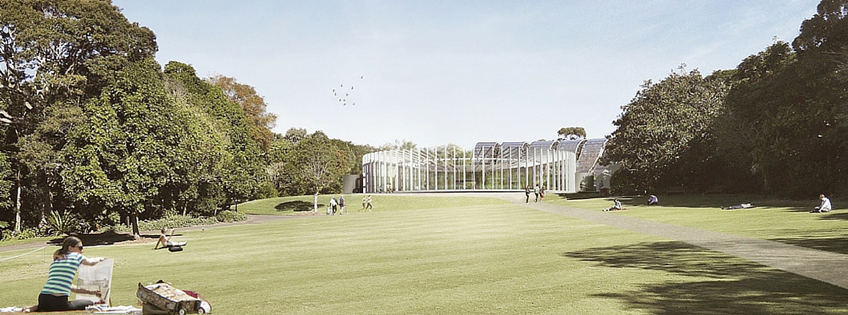
Photo - Royal Botanic Gardens Sydney
What is the Calyx all about?
The Calyx features the largest contiguous greenwall in the southern hemisphere – 60m in length, and includes over 18,000 plants. The sheer number of plants
required for the greenwall, as well as the constant supply of replacement stock to maintain the exhibition over its lifetime, is large enough to require
a new production glasshouse to be built in the Garden.
The new Glasshouse, opened in April 2016, is so technologically advanced that its three internal chambers can be configured to replicate the climatic conditions
of most regions of the earth.
Construction of the Calyx commenced in May 2015. The project is a treasury funded project and has also received significant funding from Donors – around
$14m!
600 panels of glass have been installed along with approx. 85 tonne of steel!
The main Arc pre-dates The Calyx – it was originally designed by influential Australian architect, Ken Woolley and opened in 1989. It has been
sympathetically incorporated into the new building design and houses the main exhibition space.
What’s on at the Calyx now?
Sweet Addiction is an opportunity to touch, see, smell, taste and experience chocolate like never
before. The story begins in the depths of a tropical rainforest, and takes visitors on a journey through chocolate plantations and its ancient history,
culminating in the delightful chocolatier room.
The Calyx’s green wall has been arranged into living artworks representing the Mayan God of Chocolate, a traditional chocolate box, and more.
The exhibition will be ongoing through to April 2017, with interactive chocolate-themed activities taking place throughout the exhibition period.
The Mayan and Aztec sandstone carvings in the Sweet Addictions exhibition were carved by
Garden staff from sandstone recycled from the Garden’s stone yard.
The entire Sweet Addiction is completely movable – all the plants are all in pots!
The exhibition includes seven Chocolate Trees sourced from far north Queensland, as these trees are not easily cultivated in the Sydney region.
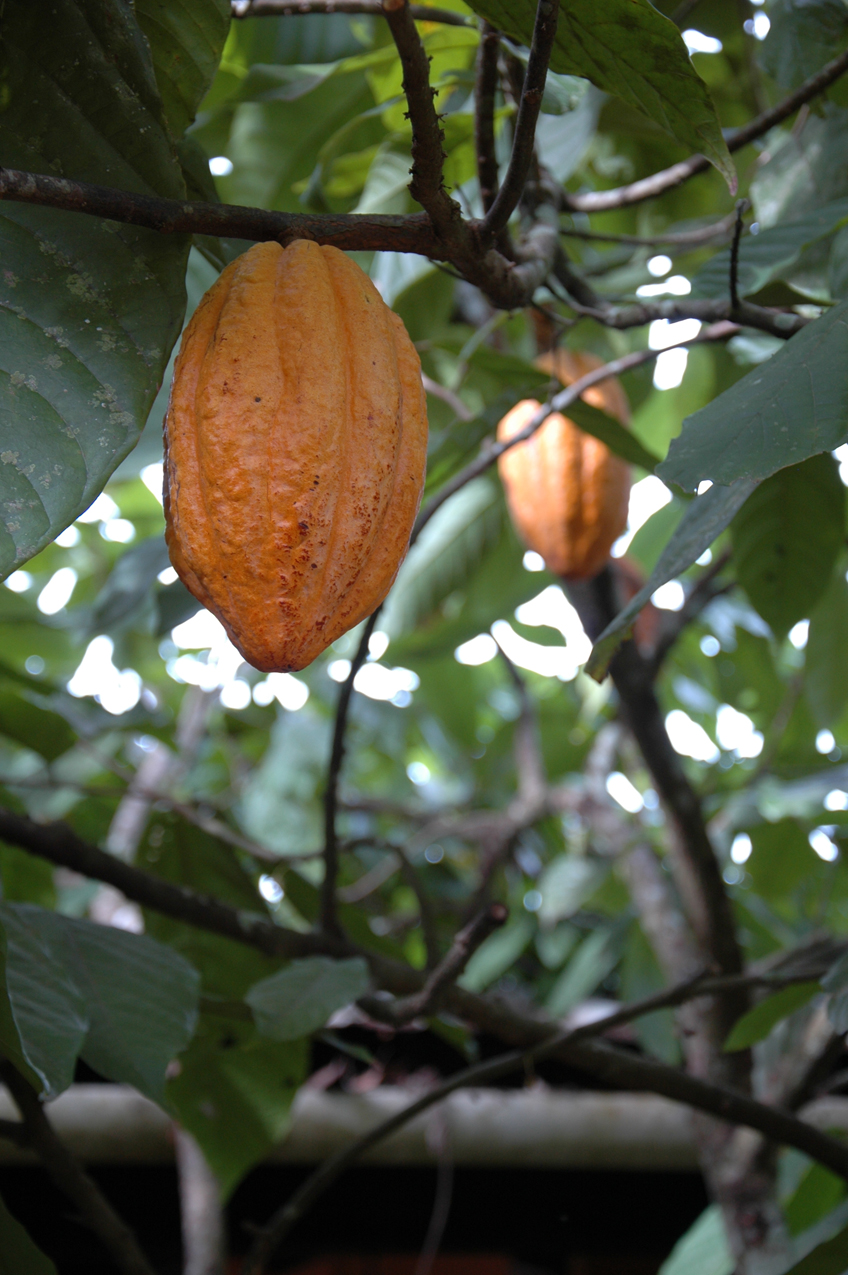
The humble cocoa, or chocolate tree, Theobroma cacao. Photo - Linda Ross